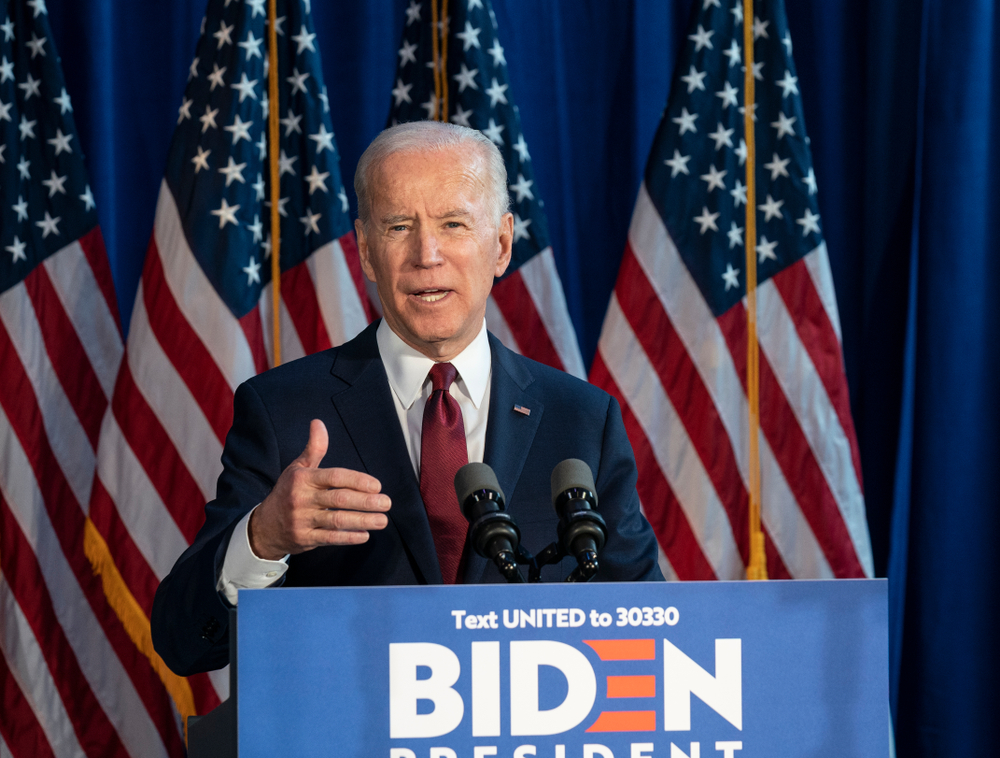Wood Mackenzie's Prakash Sharma believes the US re-joining the Paris Agreement means energy companies and investors in Asia can now “breathe a sigh of relief and plan strategies accordingly”

Attention will be on Biden and the approach he decides to take with China and the rest of its Asia Pacific counterparts across his tenure in the Oval Office (Credit: Shutterstock/lev radin)
President Joe Biden has promised to bring forth a new era in climate change policy – but what could his administration mean for Asia Pacific?
Throughout much of Donald Trump’s presidency, the US’s relationship with Asian powerhouse China has been fraught following the trade war tensions between the two nations.
But now, all eyes will be on Biden and the approach he decides to take with China and the rest of its Asia Pacific counterparts across his tenure in the Oval Office.
Here, analysts from energy researcher Wood Mackenzie share their views on how Biden’s administration could impact trade, climate change goals, and changes to the energy sector in the Asia Pacific region.
Key talking points for the Biden administration and energy in Asia Pacific
Relationship with China
Wood Mackenzie senior economist Yanting Zhou believes that while the potential for further economic decoupling between China and the US still exists under a Biden administration, a “less confrontational president may reduce this risk”.
“Trade will remain the number one policy focus for US-China relationships and our assumption is that the January 2020 Phase 1 trade deal will broadly remain in place, despite the agreement looking difficult to achieve,” he adds.
According to Zhou, amendments and subsequent agreements are “likely”, though he claims none will be “easy to conclude”.
Throughout the election campaign, Biden maintained that the US lost more than it gained in the US-China trade war as higher tariffs have raised the cost of goods for American households.
“Efforts to shorten supply chains will continue, as will China’s effort to strengthen its ties with Asia and Europe,” says Zhou.
“Therefore, we believe that the trade relationship will remain fractious and volumes between the two countries are likely to fall gradually.”
Impact on oil and gas agreements with China

Last year proved to be a struggle for a number of oil and gas producers, who have been significantly challenged by the low oil prices, as the West Texas Intermediate (WTI) fell into negative price territory for the first time ever in April, combined with a drastic drop in energy demand due to the pandemic.
As part of China’s Phase 1 trade deal, it committed to purchasing an additional $52.4bn of energy from the US by end of 2021.
Wood Mackenzie research director Sushant Gupta believes this will be “challenging” and notes that the lower oil prices, reduced US crude production and limited recovery in crude processing in China are all factors to be considered.
“Crude imports from the US ramped up in 2020 to about 350,000 barrels per day (bpd) on average, but still way below the required amount of more than 1.5 million bpd to meet the deal,” he adds.
“China’s temporary lifting of the LNG import tariff has helped increase volumes, but by nowhere near enough to fill the gap left by reduced crude imports.”
Climate change action
On day one of his presidency, Biden re-joined the Paris Agreement – an international climate pact that aims to cap the rise in global temperatures at “well below” 2C by 2100.
Trump previously withdrew from the accord, as he claimed it would “undermine the US economy” and put the country at a “permanent disadvantage”.
Wood Mackenzie vice chairman Gavin Thompson says that both collaboration and competition on tackling climate change can be expected between the US and China.
Alongside signing back up to the the Paris Agreement, he says the president is expected to unveil “ambitious plans to deliver a pathway to net-zero emissions by 2050“.
“However, the latter will require collaboration with China, particularly to bring others onboard,” he adds.
“But at the same time, China and the US will increasingly compete to be the global leader in tackling climate change, with both seeking to expand control over low/zero-carbon technology.”
Pressure on energy firms to increase climate ambitions
Wood Mackenzie research director Prakash Sharma believes the Biden administration bringing the US back in to the Paris Agreement “takes care of a lingering uncertainty in energy markets”.
He says that in Asia, energy companies and investors can now “breathe a sigh of relief and plan strategies accordingly”.
“With the US back in the agreement, we can expect a surge in net-zero 2050 policy announcements,” adds Sharma.
Unlike many of their European counterparts, US oil majors ExxonMobil and Chevron are yet to increase their climate ambitions and set net-zero emissions targets.
Sharma believes that if those companies do decide to raise their ambitions, then Asian national oil companies such as the China National Offshore Oil Corporation (CNOOC), the Petroleum Authority of Thailand (PTT) and India’s Oil and Natural Gas Corporation (ONGC) will “come under pressure to do more”.
“This could lead to a race in securing resources for the clean energy sector including semi-conductors, battery metals and renewables supply chains,” he adds.
“In the short-term however, commodity prices could become more volatile as economies return to growth and energy demand recovers.
“Impact from inflation and foreign exchange is possible depending on how Biden funds his proposed $1.9tn stimulus. If it comes from drawing down past inflows to Asia, price volatility could increase.”
